Nepal is home to some of the world’s highest peaks, including Mount Everest, and offers trekking experiences ranging from short hill walks to multi-week Himalayan expeditions. But one of the first questions any trekker asks is: which season is best for trekking in Nepal? The answer isn’t the same for everyone; it depends on what kind of experience you want, the region you plan to explore, and your tolerance for crowds, cold, or rain.
Nepal has four main trekking seasons: Spring, Autumn, Winter, and Monsoon. Each season has its own kind of weather, trail conditions, and views. For most people, Autumn (Sep to Nov) and Spring (March to May) are the best seasons for trekking because the skies are clear, the weather is nice, and the scenery looks amazing.
But Winter and Monsoon can still be enjoyable for certain treks or for travelers seeking peace and quiet. Whether you’re planning a trek in Nepal in October, checking out the Annapurna trekking season, or going for the best time for the Everest Base Camp trek, knowing the best season for trekking in Nepal will help you see the best views, stay safe, and have a trip you’ll remember.
This guide will explain each season in detail, show the best treks for every season, and give easy tips to help you plan your adventure safely and smoothly.
The best season for trekking won’t wait—lock in your adventure now with Nepal Gateway Trekking!
Trekking Seasons in Nepal
The trekking conditions in Nepal change dramatically with the seasons. Every season has something special to offer, from serene pathways and green hills to rhododendrons in blossom and unobstructed mountain views. Selecting the appropriate season and maximizing your walk can be achieved by understanding the distinctions between Autumn, Spring, Winter, and Monsoon.
- Autumn (September-November): Often considered the best season for trekking in Nepal, Autumn brings clear skies, stable weather, and moderate temperatures. The trails are busy, but the views of the Himalayas are unmatched, making it the perfect time for popular treks like Everest Base Camp and Annapurna Circuit.
- Spring (March–May): This season is well-known for its colorful scenery, rhododendron blooms, and ideal trekking weather. It is perfect for both high-altitude and mid-hill excursions because the trails are moderately crowded and the daytime temperatures are warm.
- Winter (December-February): Winter offers a quieter trekking experience. While high-altitude passes may be blocked by snow, lower regions remain accessible, and the trails are less crowded. Daytime temperatures are mild in lower regions but can be freezing at higher altitudes.
- Monsoon (June–August): This season is distinguished by plentiful vegetation and a lot of rainfall. Although landslides and slippery paths make walking difficult in most places, rain-shadowed regions like Upper Mustang and Upper Dolpo are still great choices for daring hikers.
Autumn (September - November)
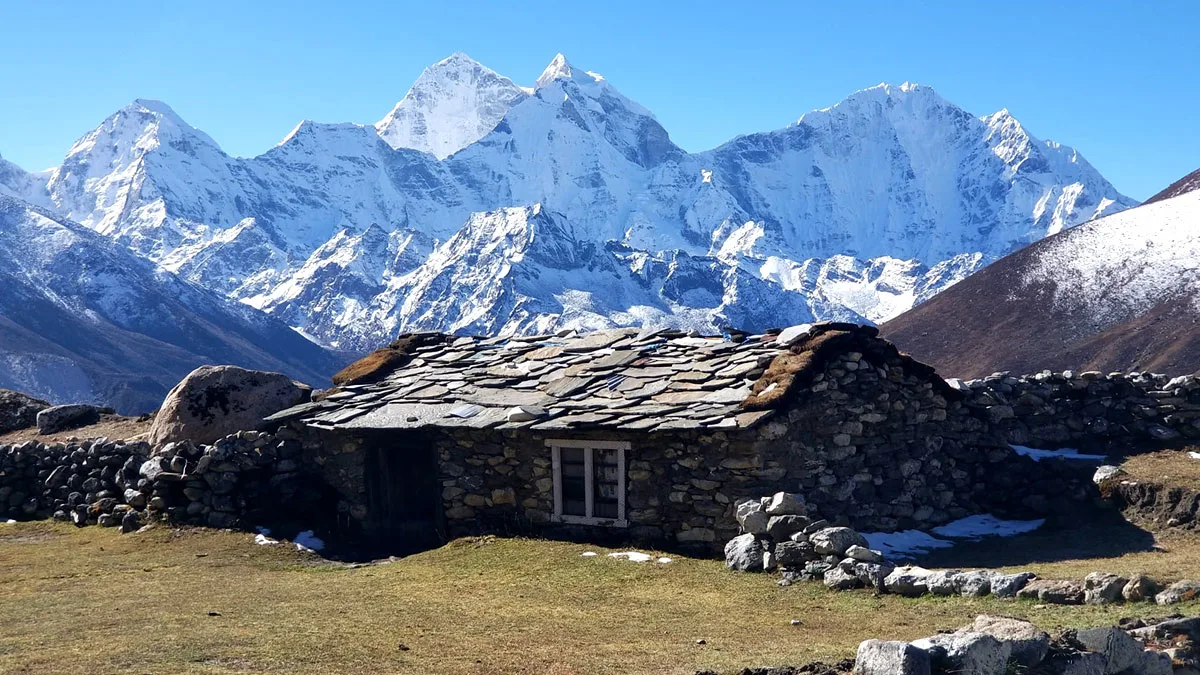
Autumn is usually called the best season for trekking in Nepal. The weather is nice most of the time, with clear skies and temperatures that are comfortable for both low and high-altitude treks. This season is great for photographers, climbers, and trekkers who want awesome Himalayan views.
Weather Details:
- Daytime temperatures: 15-22°C in lower areas, 0-10°C in high places
- Night temperatures: 5-12°C in lower areas, -5-0°C in high places
- Rainfall: Very little, just a few short showers in early September
- Visibility: Clear skies give some of the best mountain views of the year
Trail Conditions and Trekking Notes:
- Trails are dry and stable, reducing the risk of slips or trail damage
- High-altitude passes are fully accessible, ideal for the Everest, Annapurna, and Manaslu treks
- Tea houses and lodges are fully operational, but booking ahead is recommended due to peak season, as teahouses are packed.
Best Treks in Autumn:
- Everest Base Camp: Clear views of Everest, Lhotse, and Ama Dablam; high success rate for summit points
- Annapurna Circuit: Sharp views of Annapurna and Dhaulagiri; great for photos
- Manaslu Circuit: Steady weather makes trekking safer on less crowded trails like the Manaslu Circuit
- Langtang Valley: Beautiful trails with wide mountain views and local villages
If you’re planning a trek in Nepal in October, Autumn gives you clear skies, nice weather, and some of the most famous Himalayan views.
Spring (March - May)
Spring is another top season for trekking in Nepal, especially for people who like colorful landscapes and warmer weather. In this season, the lower hills and mid-altitude trails are full of blooming rhododendrons and other flowers, making the trekking routes in the Himalayas really pretty.
Weather Details:
- Daytime temperatures: 15 to 25°C in lower areas, 5 to 12°C in high places
- Night temperatures: Temperatures range from 5 to 15°C in lower areas, and -2 to 5°C in high altitudes
- Rainfall: Sometimes light showers, but it’s usually drier than the monsoon season
- Visibility: Early spring (March-April) has very clear skies, with late May having a little haze
Trail Conditions and Trekking Notes:
- Trails are generally dry and clear to navigate, though you will come across some muddy patches after occasional rain in this season
- Tea houses are open along major routes as the crowd levels are moderate compared to Autumn
- Altitude acclimatization is manageable, but proper preparation is still essential for high altitude passes in this time
Best Treks in Spring:
- Annapurna Base Camp trails are filled with blooming rhododendrons, with moderate crowd levels
- Ghorepani Poon Hill is ideal for sunrise views and colourful hills
- Mardi Himal is usually less crowded, but it has rich flora
- Everest Base Camp will have clear skies and slightly warmer daytime temperatures, which makes trekking a bit easier
If you go trekking in Nepal in March, you can enjoy nice, not-too-hot or cold weather, colorful trails, and fewer people than during the busy Autumn season.
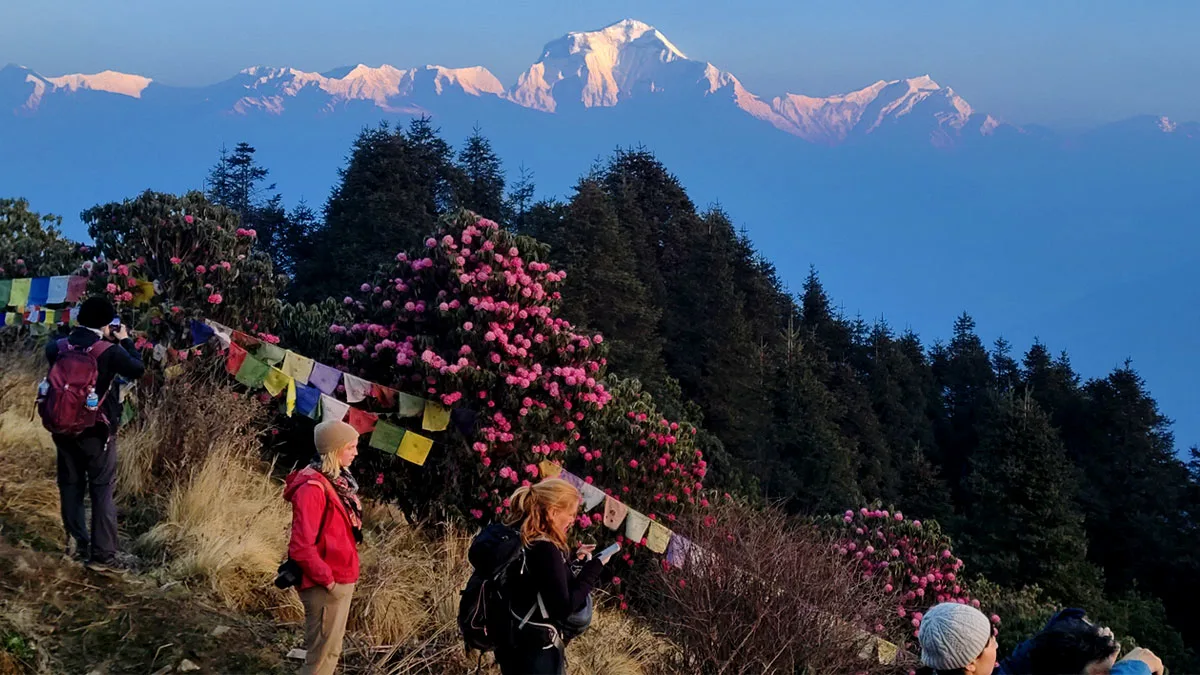
Monsoon (June - August)
Monsoon season in Nepal means lots of rain, which can make trekking in popular areas harder. Many trails get slippery and can have landslides, but some dry areas are still open, giving a good trekking experience for trekkers who are ready.
Weather Details:
- Daytime temperatures: temp range from 20 to 30°C in lower altitudes and 5 to 15°C at higher altitudes
- Night temperatures: 15 to 25°C in the lower regions and 0 to 10°C in the higher regions
- Rainfall is frequent in central and eastern regions, with sudden showers being common
- Low visibility as mountains may be obscured by clouds. But rain-shadow areas like the upper mustang maintain better visibility
Trail Conditions and Trekking Notes:
- Trails can be muddy and slippery, especially in forested regions
- Landslides do occur from time to time in hilly regions, closing pathways
- Tea houses remain open in most regions, but remote routes may be less accessible or straight-up closed
- Rain-shadow areas, such as Upper Mustang and Upper Dolpo, provide stable conditions despite the monsoon rain
Best Treks in Monsoon (Rain-Shadow Areas):
- Upper Mustang, with its dry climate and desert landscapes
- Upper Dolpo is remote and culturally rich, with a stable route during the monsoon
- Nar Phu Valley is less crowded compared to other trails in this area, with beautiful high-altitude landscapes
- Humla Region is one of the challenging and remote regions, suitable for experienced trekkers
If you plan trekking in Nepal during June-August, focus on rain-shadow treks like Upper Mustang or Upper Dolpo for safer and more enjoyable conditions.
Winter (December - February)
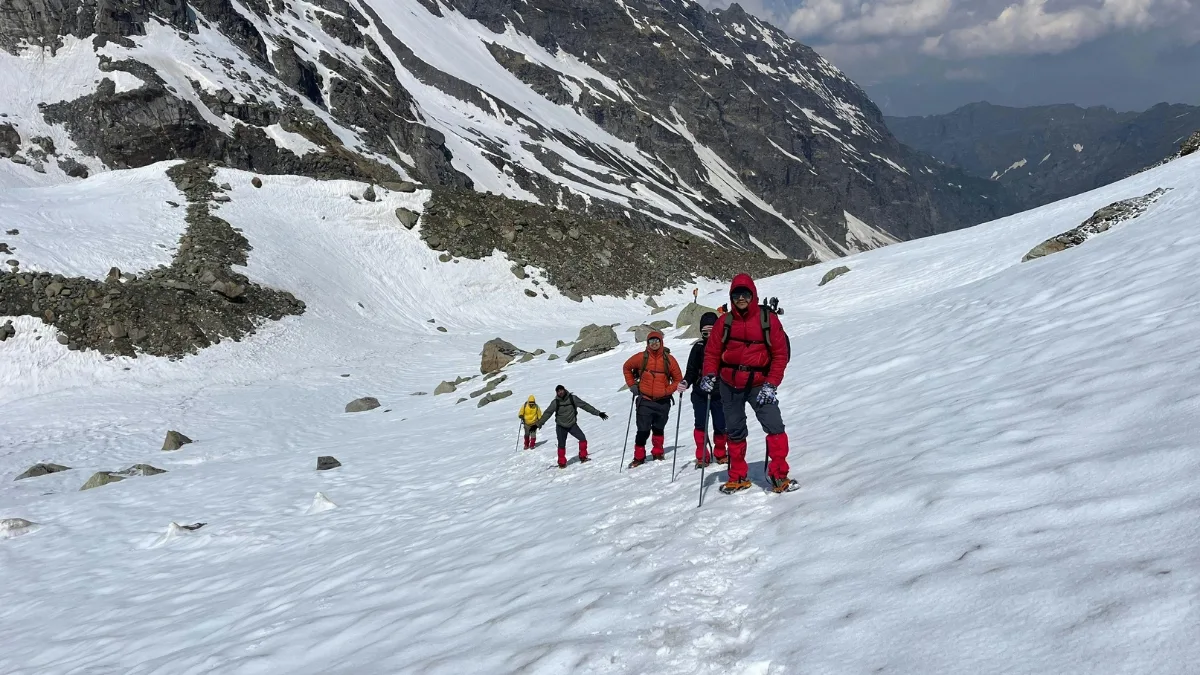
Winter in Nepal is colder, and the trails are quieter, which is great for trekkers who like being alone and away from crowds. Even though snow can block high mountain passes, the lower and middle trails are still open, giving a calm and peaceful trekking experience.
Weather Details:
- Daytime temperatures: Temps range from 5 to 15°C in lower regions and -5 to 5°C in high altitudes
- Night temperatures: 0 to 10°C in lower regions and -10 to -5 °C in high passes
- Snowfall is very common at elevations above 3,500 meters, and there is a high chance of some trekking routes being closed due to heavy snowfall
- Visibility during this season is crystal clear, though with skies in lower regions filled with crisp air, ideal for photography
Trail Conditions and Trekking Notes:
- Many high-altitude treks are restricted due to snow, making only the mid and lower trails accessible
- Tea houses are open along popular low- and mid-altitude routes but generally closed for the high altitude ones.
- Trails are quieter with very few people on the trail, offering a more serene trekking experience compared to peak seasons.
Best Treks in Winter:
- Ghorepani Poon Hill is accessible with beautiful and stunning panoramic views
- The Lower Annapurna Region is safe for winter trekking in Nepal, with fewer crowds en route
- Helambu Trek is close to Kathmandu, with moderate altitude and mild temperatures
- Chisapani-Nagarkot Hike is an even shorter trek with excellent views of the Himalayas vistas
Trekking in Nepal during December or January offers a peaceful, low-crowd adventure, especially suitable for mid- and lower-altitude treks.
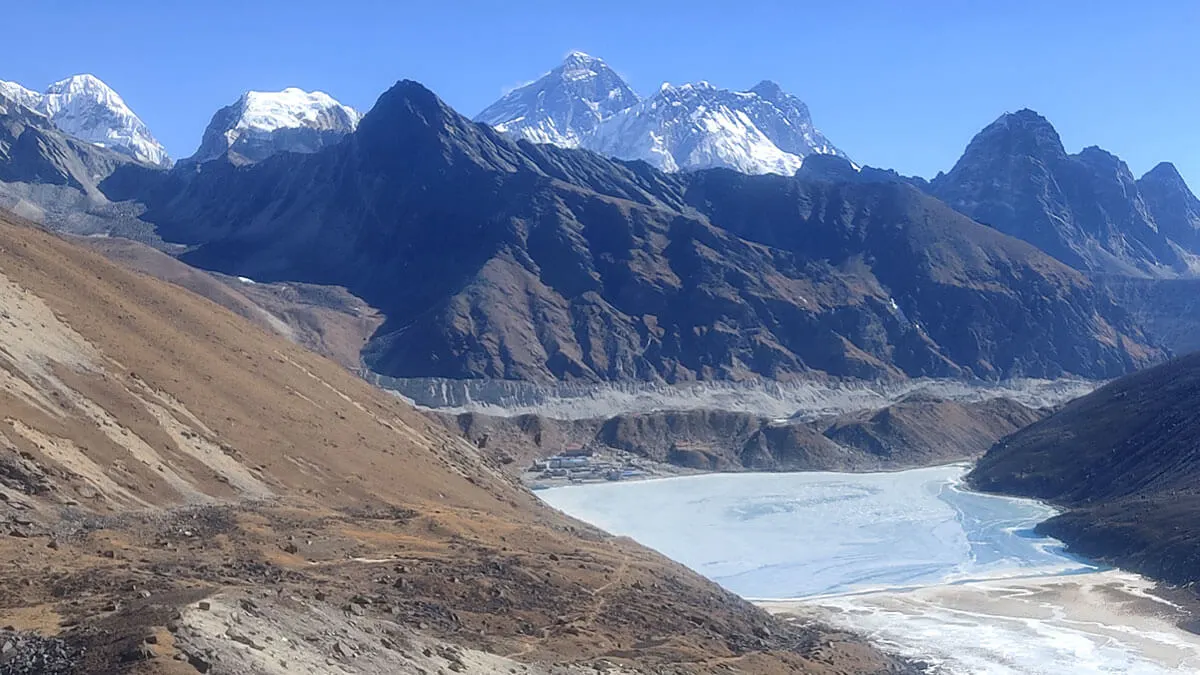
Factors to Consider When Choosing a Trekking Season
Picking the right season for trekking in Nepal is not just about the weather. Things like altitude, trail conditions, how many people are around, costs, and local culture are also important to make your trek safe, fun, and unforgettable.
Weather & Temperature
The weather is the most important factor for trekking. As high-altitude regions like Everest and Manaslu require stable and dry conditions for a good trekking environment. In contrast, lower-altitude trails can be done even with a bit of variability, as they are not that dangerous compared to high-altitude ones.
Key Points:
- Autumn & Spring bring moderate temperatures, clear skies, and a low chance of rain. The weather is ideal for the high pass trekking
- Winter is rather harsh with cold climate and snow at higher altitudes. Teahouses closing up is normal, so it’s best for lower or mid-hill treks during this time
- Monsoon is the season of heavy rain, muddy trails, and possibly landslides. So if you need to, only trek in safe regions like Upper Mustang and Upper Dolpo with its rain-shadow areas
Practical Tips:
- Check daily weather forecasts before starting a trek
- Dress in layers to handle fluctuating day and night temperatures
- Carry a lightweight waterproof jacket even in Autumn or Spring for unexpected showers
Crowd Levels
Do you prefer sharing the trail with lots of fellow trekkers or having the paths mostly to yourself? Crowd levels in Nepal change a lot depending on the season. As peak season is always crowded and off-season has fewer crowds en route.
Key Points:
- Peak Season (Autumn & Spring): Trails are busy; tea houses may require reservations
- Off-Season (Winter & Monsoon): Trails are quieter; some tea houses may be closed
Practical Tips:
- Booking lodges in popular areas like Namche Bazaar or Ghorepani in advance would be a smart thing to do during peak season
- If you prefer to trek solo, consider going in mid-Spring or early Winter for less crowded trails, but be prepared for the possible rainfall
Cost & Availability
Ever wondered why flights and lodges are pricier in some seasons? Trekking costs and room availability go hand in hand with the season you choose.
Key Points:
- Peak season rates are higher for flights, permits, and lodges, as there is high demand for everything related to trekking
- Off-season travel is cheaper, but some services may be limited, with teahouses straight up being closed in high altitudes
Practical Tips:
- Plan and book early to secure the best rates during Autumn and Spring
- You can consider going on an off-season trek if you are tight on budget
Safety & Trail Conditions
The trail can feel very different depending on the season. Some seasons are stable and safe, while others bring rain, snow, or tricky paths.
Key Points:
- Monsoon has a risk of landslides and slippery trails
- Winter is the season of snowfall, as heavy snowfall can hamper trails and even block high pass routes
- High-altitude treks need acclimatization days, so adding in buffer days is important
Practical Tips:
- Carry a simple first-aid kit and medicine for altitude sickness, like Diamox
- Trek with an experienced guide in tricky seasons
- Avoid trekking to dangerous trails during the off-season
Festivals & Cultural Experiences
If you choose the right time to hike, Nepal's festivals may transform your journey into a full-on cultural experience. You'll get a close-up look at customs that make Nepal genuinely distinctive. Vibrant festivals like Dashain and Tihar are two of the main festivals celebrated in Nepal.
Key Points:
- Autumn: Dashain and Tihar offer vibrant cultural experiences
- Everest region: Mani Rimdu festival showcases local Buddhist traditions
- Spring: Holi celebrations add colour and excitement to the lower regions
Practical Tips:
- Look up festival dates and make plans appropriately if you wish to experience the local way of life.
- Remember that popular trekking areas may see an increase in tourists during festivals.
Final Answer - Which Season is Best for Trekking in Nepal?
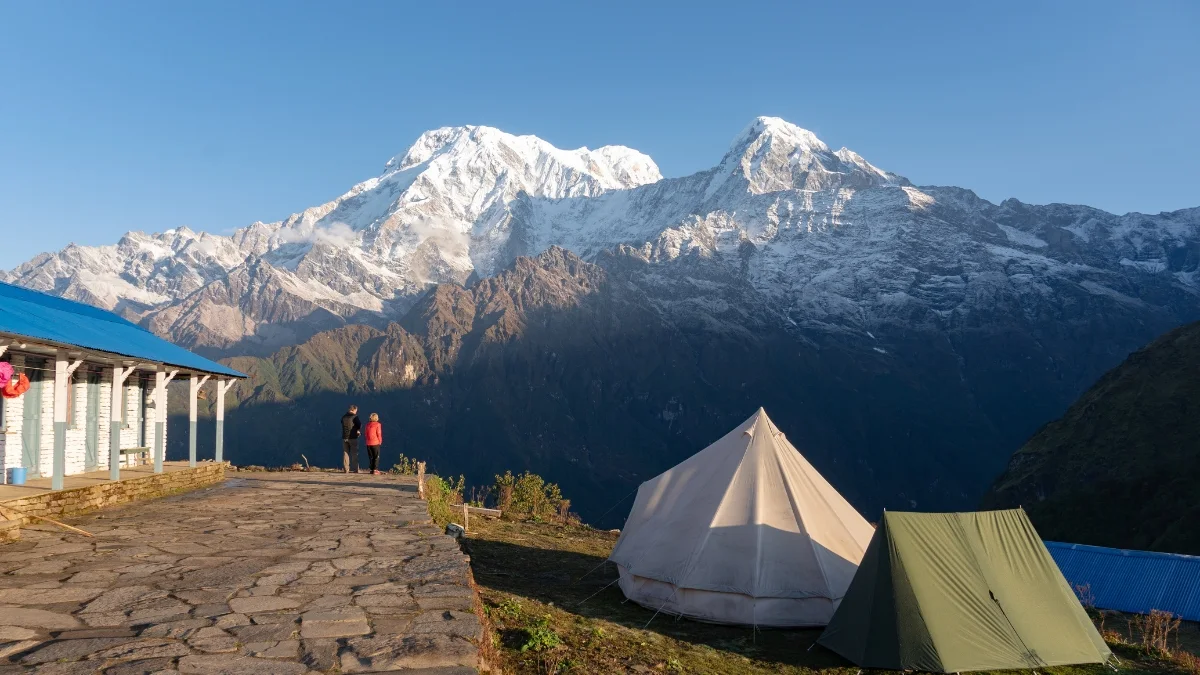
Your experience trekking in Nepal might be greatly impacted by the season you choose. Knowing which season is best for trekking in Nepal promotes a safe and satisfying experience because weather, trail conditions, and crowd levels change throughout the year.
- Best Overall: October & November (Autumn), March & April (Spring) - these seasons offer clear skies, stable weather, and comfortable temperatures, making them ideal for most treks, including Everest Base Camp, Annapurna, and Manaslu circuits.
- Good Alternatives: September (post-monsoon) and May (warmer, slightly hazy) - still good trekking conditions with slightly fewer crowds or minor visibility issues.
- Avoid: June-August - heavy rain, leeches, muddy trails, and occasional landslides make trekking risky in most regions.
- Winter (Dec-Feb): Suitable only for short or lower-altitude treks. High passes are snowed in, but lower regions like Ghorepani Poon Hill or Chisapani-Nagarkot remain accessible.
- Special Cases: Upper Mustang & Upper Dolpo - these rain-shadow regions are ideal even during monsoon, offering dry trails and clear mountain views.
Choosing the Right Season for Your Trek
Picking the right season for trekking in Nepal can make a huge difference in your experience. Autumn (October-November) and Spring (March-April) offer the best combination of clear skies, stable weather, and accessible trails for most treks.
If you prefer fewer crowds, September or May are good alternatives, though visibility and trail conditions may vary slightly. Winter (December-February) is ideal for lower-altitude or short treks, while monsoon (June-August) should be reserved for rain-shadow regions like Upper Mustang or Upper Dolpo.
Remember, each season has its own benefits and challenges. Plan according to your preferred balance of comfort, scenery, and adventure, and make sure to book accommodations, flights, and guides in advance. Proper preparation, like clothing, gear, and permits, ensures a safe and comfortable trek regardless of the month.
Start planning your trek in Nepal today to secure the best dates and experience the Himalayas at their finest. Contact Nepal Gateway Trekking.
FAQs - Trekking Seasons in Nepal
Which season is best for trekking in Nepal?
Considering the factors like crowds, trail conditions, and Himalayan views, the best season for trekking in Nepal depends on your preference. If you want clear skies with stable weather, then Autumn (Oct to Nov) and Spring (March to April) are the best. If you prefer a solo journey, then September or May are good alternatives.
Which month is the coldest for trekking in Nepal?
December and January are the coldest months, especially at high altitudes. Lower-altitude treks remain manageable with proper winter clothing.
What is the best month for the Everest Base Camp trek?
October and November are the best months, offering clear skies and stable weather. March and April are also good alternatives with warmer temperatures and blooming rhododendrons.
Can I trek in Nepal in December or January?
Yes, but only for lower-altitude or shorter treks. High passes and regions above 4,000 meters are often snow-blocked.
Which months should I avoid trekking in Nepal?
The time frame between June and August is best to avoid due to heavy monsoon rains, leeches, and slippery trails. Winter months are also challenging for high-altitude treks.
Is monsoon trekking in Nepal safe?
Monsoon trekking is risky in most regions, but rain-shadow areas like Upper Mustang and Upper Dolpo remain accessible and dry. Proper gear and flexibility are essential.
Which season is cheapest for trekking in Nepal?
Winter (December-February) and monsoon (June-August) are the most budget-friendly months, with lower prices for accommodations, flights, and guides.




